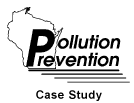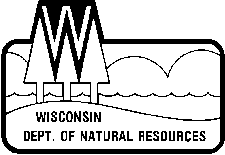
Georgia-Pacific Corporation
Hardwood Sulfite Pulp Bleaching with
Oxygen and Hydrogen Peroxide
G-P is a world-class producer of pulp, paper and forest products headquartered in Atlanta, Georgia. Georgia-Pacific had pulp and paper sales of $5.2 billion in 1993 from its 85 facilities in the United States and Canada. It employs approximately 50,000 people, 900 of whom work in Port Edwards, Wisconsin.
Successful mill trials were run to approximate an oxygen/peroxide bleach plant. Data obtained during the trials showed that G-P could expect total removal of chloroform and chlorine air releases from the wood pulp bleaching operation as well as elimination of the chlorinated phenolics in the washer filtrates going to the treatment plant.
Releases to the air from the former bleaching process were of very low concentration but went on continuously to add up to 25 tons of chloroform per year and four tons of chlorine per year. These materials are reportable under SARA Title III, section 313, and are regulated under the state of Wisconsin Air Toxics Rule (NR445).
The new system was started on Oct. 1, 1993. The pulp bleaching operation is no longer listed as a generator of chloroform or chlorine under SARA Title III. A rigorous testing of all mill vents and process flows is under way this year as part of an environmental study; we expect this independent testing to confirm the new status of our pulp bleaching process under SARA Title III.
Feedstock
Unbleached sulfite hardwood pulp
Waste
Chloroform to air - 25 tons (1992), chlorine to air - four tons (1992)
Disposal
To air and wastewater treatment plant
Pollution Prevention Process
Feedstock
Unbleached sulfite hardwood pulp
Waste
Water, oxidized pulp residues
Disposal
To air and wastewater treatment plant
Multi-million-dollar project (1993)
Operation/Maintenance
Costs
Essentially unchanged
Payback Period
Indefinite
100 Wisconsin River Drive
Port Edwards, Wisconsin 54469
Phone: 715/887-5253
Air and Stream Improvement (NCASI)
260 Madison Avenue
New York, NY 10016
Free, On-site Technical Assistance
University of Wisconsin Extension
Solid and Hazardous Waste Education Center
Milwaukee area: 414/475-2845
Remainder of state: 608/262-0385
Pollution Prevention Information Clearinghouse
Wisconsin Department of Natural Resources
Hazardous Waste Minimization Program
608/264-8852, 608/267-9523 or 608/267-3763
 |
PUBL-TS-022 94 |